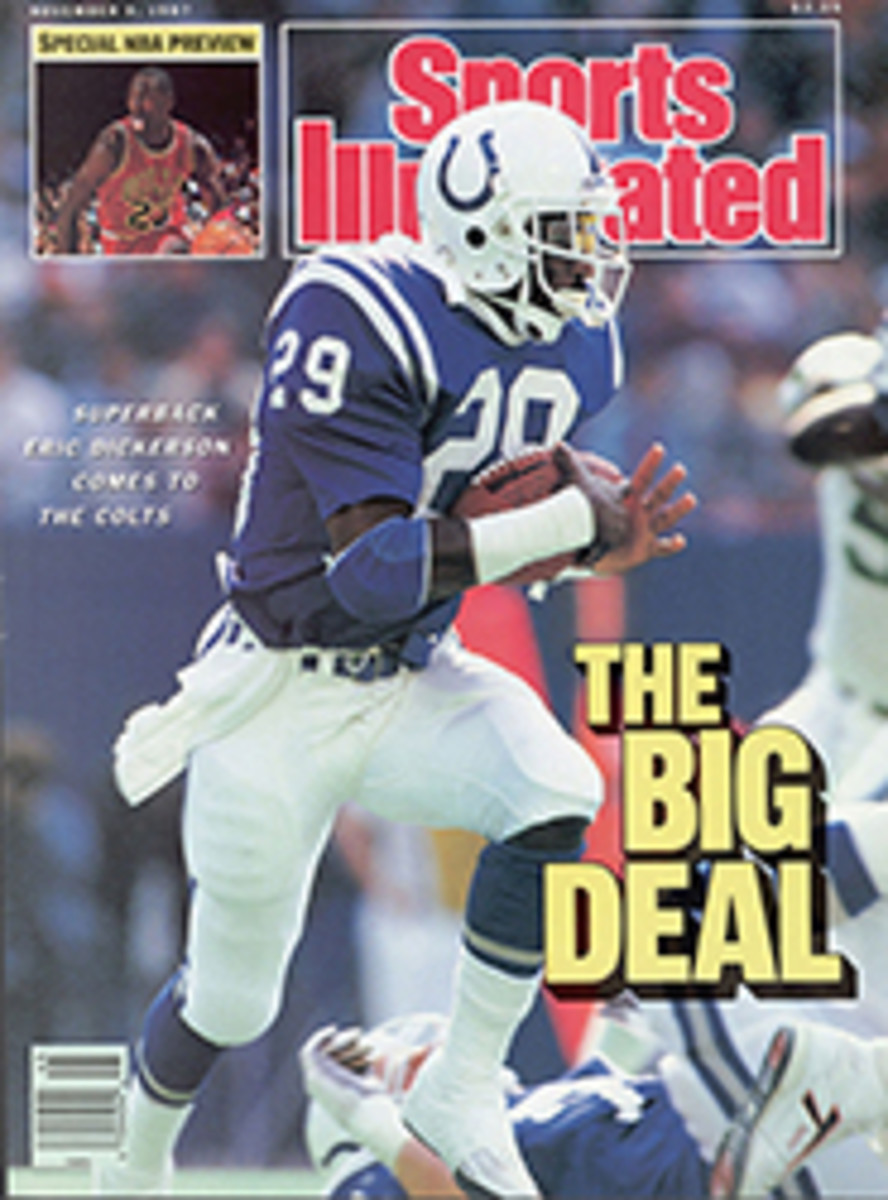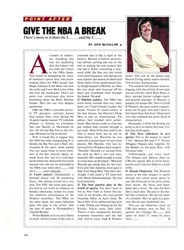
HOCKEY GOES HOLLYWOOD
To college hockey fans in the snowbelt areas of the U.S., it must have seemed as unlikely as surfing in Duluth. The nation's top college hockey rivalry in—Los Angeles? The University of Southern California, mighty Troy, and tiny Loyola? This is a joke, right?
Not to the fans who packed Hollywood's 5,000-seat Polar Palace on Saturday nights from the middle to late 1930s. There, in the rink where most of Hollywood's ice spectaculars were filmed, students from both campuses squeezed in with the region's transplanted hockey fans, who ranged from struggling screenwriters to Bing Crosby.
These were California's first big-time hockey teams with real players, i.e., Canadians and Minnesotans. Teams that could beat traditional college hockey powers. And best of all for the fans, teams that desperately wanted to beat each other—soundly. As John Polich, a native of Hibbing, Minn., and a star right wing for Loyola, said, "Games against USC were pure dynamite. We lived to beat those guys."
When Polich, who went on to play briefly with the New York Rangers in the early '40s, celebrated his 70th birthday in Rancho Mirage, Calif., two years ago, more than a dozen old USC and Loyola players showed up. But the center of attention was Arnold Eddy, now 84, the former USC coach who, with his Loyola counterpart, the late Tom Lieb, raised college hockey in Southern California to such improbable heights.
Eddy says that the era began in 1929 when he was working as an assistant graduate manager in the USC athletic department. His boss, Gwynn Wilson, had decided to elevate hockey from club to intercollegiate status only days before and was sending a team to Yosemite National Park to open the season with a three-game series against California. But a coach was still needed, so Wilson said to Eddy, "Take you, your bride and the hockey team up to Yosemite."
"At that time," says Eddy, a native Californian, "I had never owned a pair of skates, never seen a hockey game and didn't know the rules."
But he learned fast enough. Although the Trojans lost those first three games, just two years later they started a 31-game winning streak that included two perfect seasons. At the time USC's Pacific Coast League opponents were Loyola—which had recently begun its own program—Cal, UCLA and two club teams, the Automobile Club of Southern California and the Hollywood Athletic Club. (Other clubs and colleges would later drop in and out of the league.) In the early '30s, however, USC had no serious competition—until Lieb's Loyolans came along.
If Eddy was the definitive amateur, never receiving a penny for coaching, Lieb was his opposite. From Faribault, Minn., he had gone to Notre Dame, where he played football for Knute Rockne and won two NCAA discus championships. After graduation he won a bronze medal at the 1924 Olympics in Paris, then returned to South Bend to coach under Rockne. His big break came in 1929 when, with Rockne hospitalized with a bad leg (and, according to legend, occasionally calling plays from his bed), Lieb guided the team through an undefeated season and to the national championship.
Suddenly, Lieb was a hot property. And little Loyola, a Jesuit school with only 300 students but grandiose dreams of becoming a football power, wanted the instant credibility a Rockne protègè could bring. Lieb virtually wrote his own ticket, arriving West in the fall of 1930 as a combination football coach-athletic director. Hockey was simply an after-thought, something Lieb decided might keep the football players in shape.
"Coaching hockey was fun for Lieb," says Polich. "It was just the opposite of football, which was a serious business."
Nonetheless, hockey became a factor in his football recruiting as Lieb started homing in on northern Minnesota's Iron Range. There, as soon as football ended, the sons of miners laced on skates and played certainly the toughest and possibly the best high school hockey of the era. The charismatic Lieb had no difficulty pitching the virtues of Southern California to the frostbitten two-sport Iron Rangers. To no one's surprise, by the mid-1930s approximately 80% of Loyola's hockey players hailed from that area. They all played football, too.
In 1933, Loyola stopped USC's winning streak. "I was caught by surprise," says Eddy. "I looked up, and there were all these Minnesotans who'd played hockey all their lives. They looked like football players on ice." With the challenge out, USC responded. "Before then," Eddy says, "we'd never offered so much as even a waiver of tuition to a hockey player." Suddenly the coach found himself calling on contacts in western Canada, searching out play-makers and skaters—"pure hockey players," he says—with the skills to slip through Loyola's rugged defense.
As the rivalry intensified, the level of play—and roughness—rose, which was fine with the much larger Loyolans. Between 1935 and '38 the Lions went 47-5-3 and won four straight league titles. "USC had the better players," says Polich. "They just weren't as hungry."
The Trojans had a chance to prove their skill in March 1938 when the University of Minnesota, the Big Ten champions, arrived in Los Angeles for two games against USC. The Gophers were soundly beaten both nights. (Reportedly, Minnesota had refused to play Loyola on this trip because of bad feelings over Lieb's Iron Range raiding.) The next season, USC took a trip to Minneapolis and again beat the Gophers twice.
When the end came, it came quietly. Loyola fired Lieb in the fall of 1938 after his second straight losing football season. With him went the Minnesota scouting connections that, with Polich and other top players about to graduate, were needed more than ever. But nobody realized it at the time. Things were simply going too well.
That winter the rivalry moved to Westwood's Tropical Ice Gardens, an outdoor rink built to accommodate the ice shows recently popularized by Sonja Henie. There, on March 25, 1939, USC and Loyola, then in a first-place PCL tie, set an attendance record for a college hockey game in California. More than 8,000 fans saw the teams play to a scoreless tie. It was the final game of the regular season, serving to whet the fans' appetite for a playoff rematch. It never came about, though.
The following Saturday, Loyola and the Hollywood Athletic Club—stocked mainly with ex-Trojans—met at the Gardens in the first round of the playoffs. This game, too, was 0-0 after one overtime, but, as a playoff game, it had to continue until a winner emerged. Unfortunately, it was a chippy game made worse by a steadily falling rain, and the fight that came early in the second overtime was almost inevitable. It started when Polich decked his shadow, a Hollywood player named Sid Lovitt, and escalated into a free-for-all joined by about 60 drenched spectators. Eventually the ice was cleared and penalties meted out; Loyola got the worst of it. Feeling wronged, the Loyola players walked out in protest, and "the craziest game of a crazy season," as the L.A. Times called it, was forfeited to Hollywood.
With Loyola gone, USC won the playoffs handily. But it wasn't the same, and it never would be again. The following season, only seven players reported at Loyola, and USC waltzed to another league championship, led by Harry Black, father-to-be of Kansas City Royals pitcher Buddy Black. The Trojans won one more title in 1940-41, the last year of intercollegiate hockey in Southern California.
Lieb, meanwhile, went on to become head football coach at Florida State, then took an assistant's job at Alabama before returning to Los Angeles, where he died in 1962. Some now say that if Lieb had stayed on at Loyola, big-time college hockey would be a fixture in Southern California today.
Eddy disagrees. "It's just a lost cause in this climate," he insists. Eddy remained at USC until his retirement, later becoming executive director of the alumni association. Like Lieb, he never coached hockey again.
The Polar Palace burned down in the late '40s and is now the site of a plant nursery, while the Tropical Ice Gardens was replaced by house lots. The memories, however, remain.
PHOTO
COURTESY OF JOHN POLICH
In 1938, 10 years after taking his first team to Yosemite, Eddy (far right) took his last.
Chris Warner, who played center and left wing in high school, lives in Cambridge, Mass.

